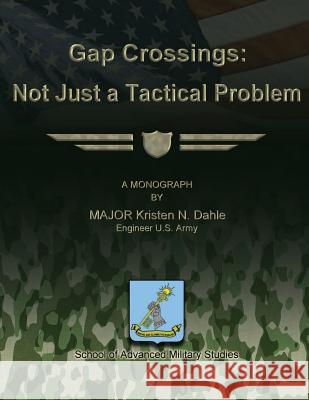Gap Crossings: Not Just a Tactical Problem » książka
Gap Crossings: Not Just a Tactical Problem
ISBN-13: 9781480022614 / Angielski / Miękka / 2012 / 48 str.
The focus of this thesis is to determine how U.S. Army corps and divisions ensure deliberate gap crossings, a type of combined arms operations, are planned using operational art. Examination of doctrine for gap crossings shows gap crossing to be tactical problems. Corps, division, and operational art doctrine does not directly address the need to incorporate gap crossings as part of an overall campaign. This paper compares two case studies from World War II in their strategic context with tactical outcomes using operational art. The failed crossing of the Rapido River in Italy and the successful crossing of the Irrawaddy in Burma are the two historical case studies examined. Operational art considered for each campaign shows the importance of the planners' and commanders' understanding and communication of not only the tactical requirements of a gap crossing but also how the crossing is part of the larger operation to achieve the strategic goal. Current gap crossing doctrine is tactically focused and should remain tactically focused. This monograph determined operational planners and commanders at the division and corps must understand operational art and incorporate it into the planning of a gap crossing like any other tactical action to facilitate the success of a campaign.
Zawartość książki może nie spełniać oczekiwań – reklamacje nie obejmują treści, która mogła nie być redakcyjnie ani merytorycznie opracowana.











